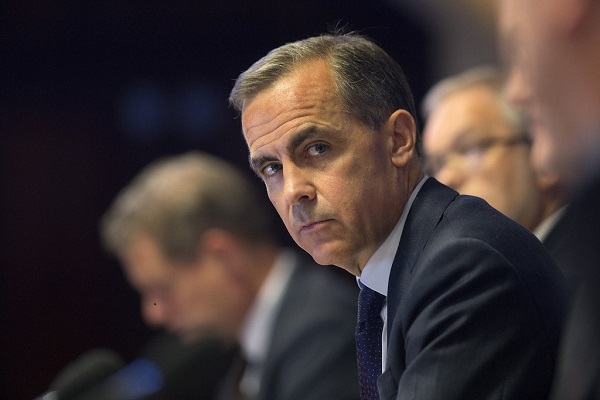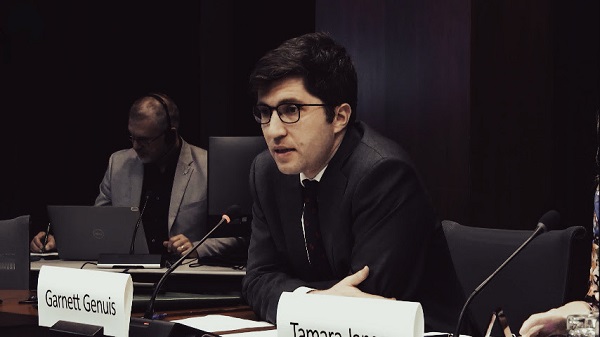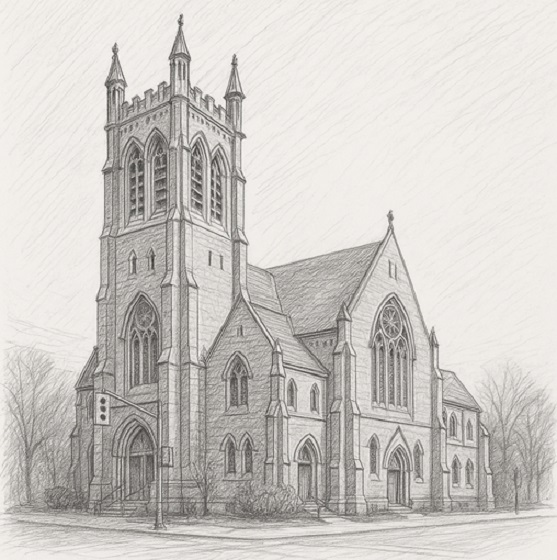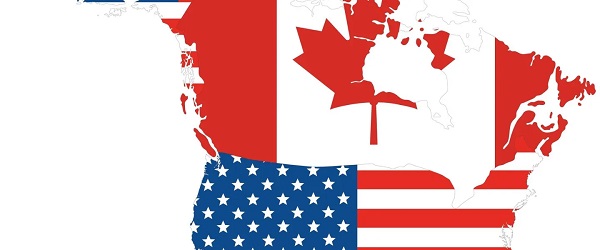Business
Carbon tariff proposal carries risks and consequences for Canada

A carbon tariff—a policy that would impose fees on imported goods based on their carbon emissions—is built on the idea that Canada should penalize foreign producers for not adhering to stringent climate policies. While this may sound like a strong stance on climate action, the reality is that such a policy carries major risks for Canada’s economy. As a resource-rich nation that exports carbon-intensive products like oil, natural gas, and minerals, Canada stands to lose more than it gains from this approach.
Mark Carney, who is competing for the federal Liberal leadership, has made the introduction of a carbon tariff the number two promise in his 16-point industrial competitiveness strategy.
Key problems with a carbon tariff in Canada
1. Retaliation from other countries
A carbon tariff (also known as a Carbon Border Adjustment Mechanism, or CBAM) would not go unchallenged by Canada’s trading partners. Major exporters to Canada, such as the United States and China, are unlikely to accept this policy without a response. They could retaliate by imposing tariffs on Canadian goods, making it significantly harder for Canadian businesses to compete in international markets. This could be particularly damaging for key industries like oil and gas, mining, and manufacturing, which rely heavily on exports. A trade war over carbon tariffs could weaken the Canadian economy and lead to job losses across multiple sectors.
2. Canada is an exporting nation
Canada exports far more carbon-intensive goods than it imports. By introducing a carbon tariff on foreign products, Canada is effectively inviting other countries to do the same, targeting Canadian exports with similar carbon-based tariffs. This would make Canadian goods more expensive on the global market, reducing demand for them and harming the very industries that drive Canada’s economy. The result? A weaker economy, job losses, and higher costs for businesses that depend on trade.
3. Big business paying for consumers’ emissions
The Carney plan also proposes to make large businesses bear the cost of helping individual households lower their carbon emissions. While this may sound like a fair approach, in practice, these costs will be passed down to consumers. Businesses will need to offset these additional expenses, leading to higher prices on everyday goods and services. In the end, it is Canadian families who will bear the financial burden, facing increased living costs, higher taxes, and fewer job opportunities as businesses struggle to absorb the additional costs.
CBAM in context: implications for Canada
Has this been tried elsewhere?
The European Union’s Carbon Border Adjustment Mechanism (CBAM) is currently in effect. It entered its transitional phase on October 1, 2023, during which importers of certain carbon-intensive goods are required to report the embedded emissions of their imports without incurring financial liabilities. This phase is set to last until the end of 2025. The definitive regime, where importers will need to purchase CBAM certificates corresponding to the carbon emissions of their imported goods, is scheduled to begin in 2026.
However, Europe is not Canada’s largest trading partner—that is the United States. With Donald Trump back in the presidency, there is no chance that the U.S. will implement a CBAM of its own. If Canada were to move forward with a unilateral carbon tariff, if anyone prepared to argue that it would not face significant economic punishment from the Trump White House?
Moreover, with 91 percent of the world having no carbon tariff, other countries would impose countermeasures, leaving Canadian businesses struggling to remain competitive.
This raises the question: is the push for a carbon tariff in Canada more about political positioning than economic pragmatism? Given the unlikelihood of U.S. participation, a Canadian CBAM would amount to a unilateral economic sacrifice. While this may appeal to certain voter bases, the reality is that such a policy would carry immense risks without global coordination. Policymakers should carefully consider whether pursuing this path makes sense in a world where Canada’s largest trading partner is unlikely to follow suit.
Where do others stand?
Chrystia Freeland, the former finance minister and current Liberal leadership candidate, has not explicitly detailed her stance on carbon tariffs. However, she has emphasized the importance of defending Canadian interests against U.S. economic nationalism, particularly in response to potential tariffs from the U.S.
Conservative leader Pierre Poilievre is a vocal critic of carbon pricing mechanisms, including carbon taxes, and has pledged to repeal such measures if elected.
Elizabeth May, leader of the Green Party, has consistently advocated for strong environmental policies, including carbon pricing, but has not specifically addressed carbon tariffs in recent statements.
What it means to consumers
Here are some relatable examples of carbon-intensive exports and imports for the average Canadian:
Carbon-Intensive Exports from Canada
Oil & Gas – Canada is a major exporter of crude oil, natural gas, and refined petroleum products, particularly to the U.S. If a carbon tariff were applied to these products, it could make them more expensive and less competitive in global markets, affecting jobs in Alberta, Saskatchewan, and Newfoundland.
Lumber & Pulp – Canada is a leading exporter of forestry products, including lumber, paper, and pulp, which require significant energy and emissions to produce. If tariffs are imposed on Canadian wood products, the forestry sector could suffer.
Agricultural Products – Fertilizers, beef, and grain production all have significant carbon footprints. If trading partners retaliate with tariffs, Canadian farmers may struggle to compete in global markets.
Carbon-Intensive Imports into Canada
Steel & Aluminum – Canada imports a large amount of steel, primarily from China and the U.S., which is essential for industries like construction, manufacturing, and automotive production. A carbon tariff would drive up costs for these industries.
Consumer Goods from China – Many everyday products (electronics, clothing, appliances) are imported from countries with high-carbon electricity grids. A carbon tariff could increase the price of these goods for Canadian consumers.
Food Products – Imported produce, meats, and packaged foods from countries like the U.S. and Mexico often have high transportation-related emissions. A carbon tariff could increase grocery bills.
Automotive
Parliament Forces Liberals to Release Stellantis Contracts After $15-Billion Gamble Blows Up In Taxpayer Faces

After betting taxpayer billions on a green-industry deal that collapsed under U.S. tariffs, MPs move to expose what Ottawa promised Stellantis and what Canadians actually got for the money.
Parliament just blew the lid off one of the biggest corporate giveaways in Canadian history.
For years, Ottawa and Queen’s Park have bragged about “historic investments” in green manufacturing. What they didn’t say is that $15 billion of your money went to Stellantis, the Dutch auto conglomerate behind Chrysler, Jeep, and Ram, only for the company to announce it’s cutting 3,000 jobs in Brampton and shipping them south to the United States.
That betrayal is what triggered a heated meeting of the House of Commons Government Operations Committee on October 21. What started as routine procedure turned into a full-scale reckoning over how billions were handed to a foreign corporation with almost no strings attached.
Conservative MP Garnett Genuis opened with a blunt motion: produce every contract, memorandum of understanding, or side deal the government signed with Stellantis and its affiliates since 2015. Every page, every clause, in both official languages, “without redaction.” The demand wasn’t symbolic, it was about finding out if Trudeau’s government ever required the company to keep those Canadian jobs it was paid to “protect.”
Liberals scrambled to block it. MP Jenna Sudds proposed an amendment that would let bureaucrats black out whatever they deemed “sensitive.” In practice, that meant hiding anything embarrassing — from cabinet discussions to corporate fine print. Opposition MPs called it exactly what it was: a cover-up clause. It failed.
The committee floor turned into open warfare. The Bloc Québécois tried a softer sub-amendment giving the House Law Clerk power to vet redactions. Conservatives countered with their own version forcing departments to hand over unredacted contracts and justify any blackouts in writing. After a suspension and some backroom wrangling, a rare thing happened: compromise.
The motion passed unanimously. Even the Liberals couldn’t vote against it once the light was on.
The debate itself revealed how badly Ottawa has lost control of its own economic agenda. Conservatives pressed officials on why Canadians were paying billions for “job creation” only to see Stellantis pack up for Illinois once U.S. tariffs came down. Liberals blamed Trump, tariffs, and “global conditions,” the excuses were almost comical. Liberal members blamed Donald Trump —yes, really— for Stellantis abandoning Canada. According to them, Trump’s tariffs and “America First” trade policy scared the company into moving production south.
But here’s what they didn’t say: Trump announced his 2024 presidential campaign on November 15, 2022, promising to rip up Joe Biden’s green industrial agenda and bring manufacturing back to U.S. soil. Everyone heard it. Everyone knew it. And yet, on July 6, 2023, more than half a year later, Ottawa proudly unveiled its $15-billion subsidy for Stellantis and LG Energy Solution — a deal built entirely on the assumption that Trump wouldn’t win.
So let’s be clear about what happened here. They didn’t just hand billions to a foreign automaker. They gambled that the next U.S. president wouldn’t change course. They bet the house —your tax dollars— on a political outcome in another country.
Think about that. Fifteen billion dollars of public money wagered on a campaign prediction. They bet on black, and it landed on red.
Even if the gamble had gone their way — even if Trump had lost and Biden’s green subsidy regime had survived untouched — the deal would still have been a terrible bargain.
During the committee meeting, the Bloc Québécois pointed to the 2023 Parliamentary Budget Officer’s report, which projected that the combined federal and Ontario subsidies to Stellantis and Volkswagen, roughly $28 billion total, including Stellantis’s $15 billion share, wouldn’t even break even for twenty years. That means taxpayers would have to wait until the mid-2040s just to recover what Ottawa spent.
So imagine the “best-case scenario”: the U.S. keeps its green-industry incentives, the plant stays in Canada, and production runs at full capacity. Even then, ordinary Canadians don’t see a financial return for two decades. There are no guaranteed profits, no guaranteed jobs, and no repayment. It was a long-odds bet on a global policy trend, financed entirely with public money.
In other words, whether the roulette wheel landed on black or red, the house still lost because the government put your chips on the table in a game it never controlled.
Behind the numbers, the story is brutally simple: Ottawa slid its chips across the table, wrote the cheques, and Stellantis walked away with the winnings. When MPs tried to see the receipts, the government grabbed for the cover of secrecy — no sunlight, no scrutiny, just “trust us.”
Now, for the first time, Parliament is about to peek under the table. The committee will finally see the real contracts — not the press releases, not the slogans, but the fine print that tells Canadians what they actually paid for. The review will happen behind closed doors at first, but the pressure to show the public what’s inside will be enormous.
Because if those documents confirm what MPs already suspect —that there were no job guarantees, no clawbacks, and no consequences —then this isn’t just a bad hand. It’s a rigged table.
Ottawa didn’t just gamble with taxpayer money; it gambled against the odds, and the dealer —in this case, Stellantis— already knew the outcome. Even if the wheel had landed on black, taxpayers were still stuck covering a twenty-year “break-even” fantasy, as the Bloc reminded everyone.
The next two weeks will show Canadians whether their government actually bought jobs or just bought headlines. One thing is certain: the high-rollers in Ottawa have been playing roulette with your money, and the wheel’s finally slowing down.
Subscribe to The Opposition with Dan Knight .
For the full experience, upgrade your subscription.
Business
Canada Revenue Agency found a way to hit “Worse Than Rock Bottom”

From Conservative Part Communications
Last month, Carney’s Minister responsible for the Canada Revenue Agency (CRA) debuted their new slogan: “It can’t get much worse than it is now.” Today, the Auditor General reported that under the Liberals, it has.
Over the 2024/25 period, only 18 per cent of callers were able to reach a CRA agent within 15 minutes, a far cry from the target of 65 per cent of callers. In June, the numbers plunged to just 5 per cent of callers able to get through within the service standard of 15 minutes.
The average wait time took over half an hour, double what it was the year prior. And that was if you were even given the option of getting help. Nearly nine million calls were “deflected” by an automated voice telling Canadians to figure it out themselves, with no option to speak with an agent.
Wait times are so bad that over 7.6 million calls were disconnected before callers were able to reach an agent or be provided automated service. As wait times continue to get worse and worse, Canadians have just given up, evidenced by 2.4 million more abandoned calls over the previous year.
Even when Canadians manage to get hold of an agent, employees regularly fail to provide correct information about personal and business taxes. Auditors found the call centre gave incorrect information 83 per cent of the time when asked general individual tax questions.
Non-specific questions about benefits, including about eligibility, were wrong 44 per cent of the time. Meanwhile, the CRA’s automated chatbot “Charlie”, meant to relieve the call centre, answered only two of six tax-related questions correctly.
“How is it that an organization so important to the smooth functioning of the country is failing to serve Canadians and, as the Auditor General notes, places greater importance on adhering to shift schedules and breaks than on the accuracy and completeness of the information provided?” asked Gérard Deltell, Conservative Shadow Minister for Revenue.
It’s no surprise that complaints about the CRA’s contact centre increased 145 per cent from 2021/22 to 2024/25. Despite this, the Liberals announced they will begin auto-filing taxes for 5.5 million Canadians, automatically enrolling people in benefits the CRA is regularly unable to provide accurate information about.
Worse of all, the cost of the CRA’s call centre has ballooned from $50 million over 10 years in 2015 to $190 million. The total cost is projected to continue rising to $214 million over the next two years, a more than 320 per cent increase from the original contracted amount.
Meanwhile, Auditors found “there was no process documented or followed to ensure that amounts invoiced … were accurate and reflected the services received,” and that there was “little evidence that invoice details were appropriately reviewed and approved by … the Canada Revenue Agency prior to issuing payment.”
The Liberals have delivered higher taxes and higher costs with worse service for Canadians. We deserve better than continued Liberal failures. Conservatives will continue holding Carney accountable and fight to cut taxes and waste so Canadians keep more of what they earn.
-

 Alberta2 days ago
Alberta2 days agoBusting five myths about the Alberta oil sands
-

 Frontier Centre for Public Policy2 days ago
Frontier Centre for Public Policy2 days agoOttawa Should Think Twice Before Taxing Churches
-

 Business2 days ago
Business2 days agoUS government buys stakes in two Canadian mining companies
-

 Health1 day ago
Health1 day agoNew report warns WHO health rules erode Canada’s democracy and Charter rights
-

 Business13 hours ago
Business13 hours agoEmission regulations harm Canadians in exchange for no environmental benefit
-

 Business13 hours ago
Business13 hours agoQuebecers want feds to focus on illegal gun smuggling not gun confiscation
-

 Energy1 day ago
Energy1 day agoMinus Forty and the Myth of Easy Energy
-

 Courageous Discourse11 hours ago
Courageous Discourse11 hours agoNo Exit Wound – EITHER there was a very public “miracle” OR Charlie Kirk’s murder is not as it appears








